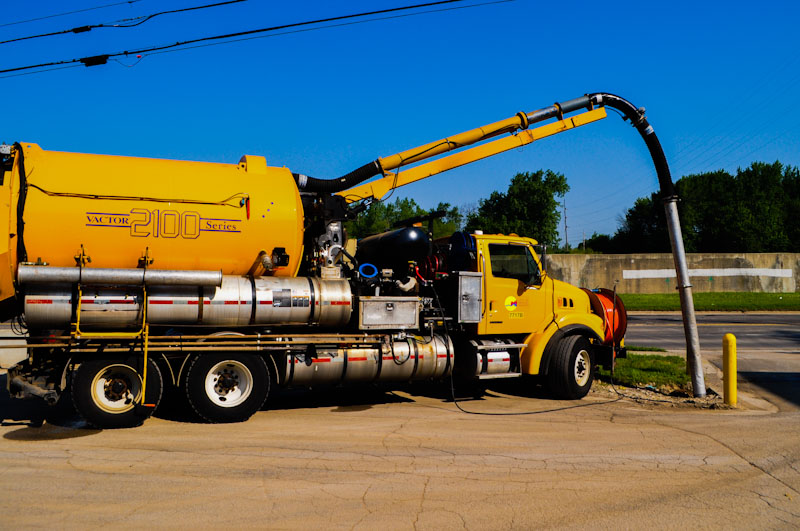Written By: Dylan Tarr
10 years ago, Grand Rapids had a pretty dismal stormwater system. It was falling apart and the City was only performing corrective maintenance on the most decrepit sections, keeping the system in a state of disrepaired limbo. Fast forward to 2018, and the system is being ushered into the 21st Century, all thanks to the City’s 20-year Stormwater Asset Management Plan.
The Stormwater Asset Management Plan is based around progressing through a scale of service to the stormwater system ranging from the lowest level of service at C to the highest at A. This includes creating and maintaining healthy natural resources like rivers, streams, and lakes; improving recreational opportunities; building a stronger economy; and making Grand Rapids a more desirable place to live.
Until recently, the City was spending three times less than the level of service C rating and only able to provide service to the most critically failing sections of stormwater infrastructure. Now at level C, the City can perform more inspections and preventative maintenance on a more frequent basis to fix problems before they happen. This is expected to extend the effective lifespan of the city’s stormwater infrastructure, doubling the time in which the entire system would need to be replaced, to 150 years.
So how did we get here? Like most government initiatives, the answer lies in a long, jargon-heavy document. And while the Stormwater Asset Management Plan is tedious to read, its results have been obvious for about a decade.
The plan began in 2008 during the Green Grand Rapids planning process. The initiative included a proposal to improve the stormwater system to keep up with water quality targets and population growth to meet regulatory requirements and account for the effects of climate change.
The plan consists of three phases. The first phase was completed in 2013 and consisted of an extensive assessment to make sure the City was fundamentally sustainable. It ensured City organizations were functioning properly, there was a good amount of civic engagement present, and local government was functioning transparently. Basically, this step made sure Grand Rapids was functional enough to accommodate the proposed program.
The City is currently in phase two, focusing on upgrading infrastructure to a consistent level across the city so further upgrades can take place from a common baseline. At the beginning of phase two the City inventoried all of the components in the stormwater system like catch basins, pipes, and manholes, and then decided how best to address them in a sustainable manner using $382,000 of a City Commission-approved $450,000. Phase two slated to last until 2019. Most recently in phase two, every foot of stormwater system 75 years and older is being filmed and examined on camera, and storm mains and catch basins are being cleaned.
Phase three can be summarized as indefinite and continuous improvement. Once all components are running smoothly it will be easier to continuously monitor and upgrade the system and bring Grand Rapids smoothly into the future with a modern stormwater management system.
As Grand Rapids progresses through these levels, the basic trend is to increase inspections, complete more upgrades, and have a more accurate plan for when stormwater components need complete replacement. Moving forward, the City intends to maintain an accurate budget, reduce community complaints and improve communication between City departments.
Photo Credit: Elaine Sterrett Isely, Director of Water Programs, WMEAC


